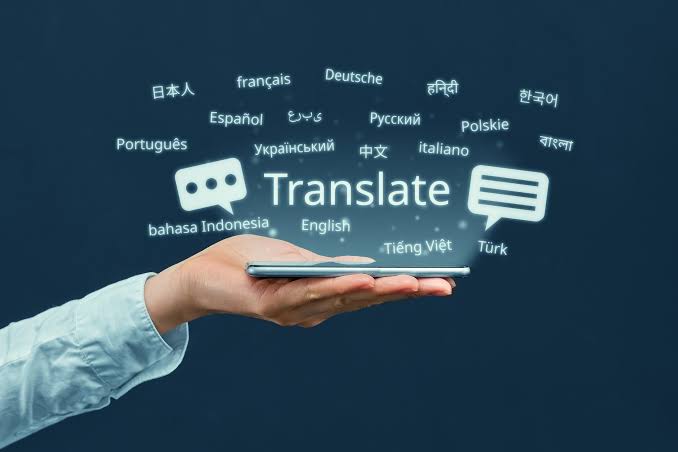Explore how AI-assisted language translation is breaking down communication barriers with its speed, cost-effectiveness, and accessibility. Learn about the technology's benefits, challenges, and future advancements in enhancing global communication.
The advancement of AI in translation has transformed how we connect across language barriers providing opportunities, for global communication and collaboration. This technology utilizes intelligence to swiftly and accurately translate written or spoken content from one language to another. By breaking down obstacles AI powered translation not facilitates international business and travel. Also promotes cultural exchange and understanding. This article delves into the aspects of AI language translation its advantages, challenges and future potential. Grasping AI Powered Language Translation AI powered language translation entails the use of learning algorithms and language processing (NLP) to translate text or speech from one language to another. Unlike traditional translation approaches that heavily depend on human translators AI based systems are designed to learn from data to enhance their precision and effectiveness over time.
1. Machine Learning and Natural Language Processing In the realm of AI powered translation machine learning plays a role. This branch of intelligence allows systems to learn from data and make predictions. On the hand natural language processing (NLP) a subset of AI focuses on how computers interact with language. These technologies work together enabling AI systems to comprehend, interpret and translate language more effectively.
2. Neural Networks Modern translation systems often utilize networks. These are machine learning models designed to mimic how the human brain processes information. Neural machine translation (NMT) models excel at capturing language nuances leading to translations that are both accurate and contextually relevant.
Advantages of AI Powered Language Translation
AI powered language translation comes with a range of benefits that make it a valuable resource for both individuals and businesses.
1. Speed and Efficiency The standout feature of AI translation is its speed. AI systems can swiftly handle and translate text volumes within seconds. This makes them ideal for communication and tasks.
2. Cost Efficiency: Traditional translation services can be pricey, especially for projects or ongoing requirements. The use of AI in translation helps to cut costs by automating the process making it more affordable for individuals and businesses with tight budgets.
3. Availability: AI translation tools are accessible across platforms such as smartphones, computers and web applications. This widespread availability allows users to translate text or speech while on the move making it easier to communicate in situations like travel, business meetings and online interactions.
4. Improved Communication: By overcoming language barriers AI powered translation facilitates communication between speakers of languages. This can result in enhanced collaboration, better understanding and stronger relationships, both in personal and professional settings.
Challenges and Limitations
Despite its benefits AI language translation also encounters limitations and challenges.
1. Accuracy: Although AI translation technology has progressed it still struggles with capturing context accurately. Languages are filled with nuances, phrases and cultural references that machine translation may not grasp fully. This can result in translations that may be correct but sound awkward or misleading in context.
2. Sensitivity. AI systems may not fully comprehend context and sensitivity. This can lead to translations that are culturally inappropriate or fail to convey the intended message potentially causing misunderstandings or offense.
3. Privacy Concerns. Utilizing AI powered translation tools often involves handling personal or sensitive data. It's crucial to ensure that these systems manage data securely and adhere to privacy regulations to safeguard user information and maintain trust.
4. Reliance on Training Data: The precision of AI translation tools relies on the quality and quantity of the data they receive during training. Languages or dialects with limited exposure may yield translations underscoring the importance of ongoing enhancement and expansion of training datasets.
The Future of AI Powered Language Translation
The future of AI powered language translation looks promising with advancements and innovations that will further improve its capabilities and tackle existing challenges.
1. Enhanced Algorithms: Continuous research and progress in learning and natural language processing are anticipated to result in algorithms that boost translation accuracy and contextual comprehension. As AI systems evolve theyll become more adept at navigating language subtleties and cultural contexts.
2. Multilingual Frameworks: Upcoming translation technologies may integrate models that can manage languages simultaneously. This would facilitate smooth translation across languages within an interaction breaking down communication obstacles further.
3. Combining with Technologies AI powered translation is expected to work alongside technologies like reality (AR) and reality (VR). This collaboration could result in translation experiences and improve communication in settings.
4. Improved Customization Progress in AI might bring about tailored translation services that adjust to specific user preferences and ways of communicating. Such customization would enhance the suitability and impact of translations, for various user requirements.
Conclusion
The introduction of AI powered translation has revolutionized how we connect across cultures and languages providing advantages like speed, cost efficiency and improved accessibility. Despite facing challenges, in accuracy and cultural nuances ongoing progress in AI technology is set to overcome these obstacles and enhance translation systems capabilities. With the evolution of AI supported translation it will play a role, in promoting communication and nurturing understanding, among diverse groups of people.
